February 9-15, 2025
Could this have been the peak of winter?
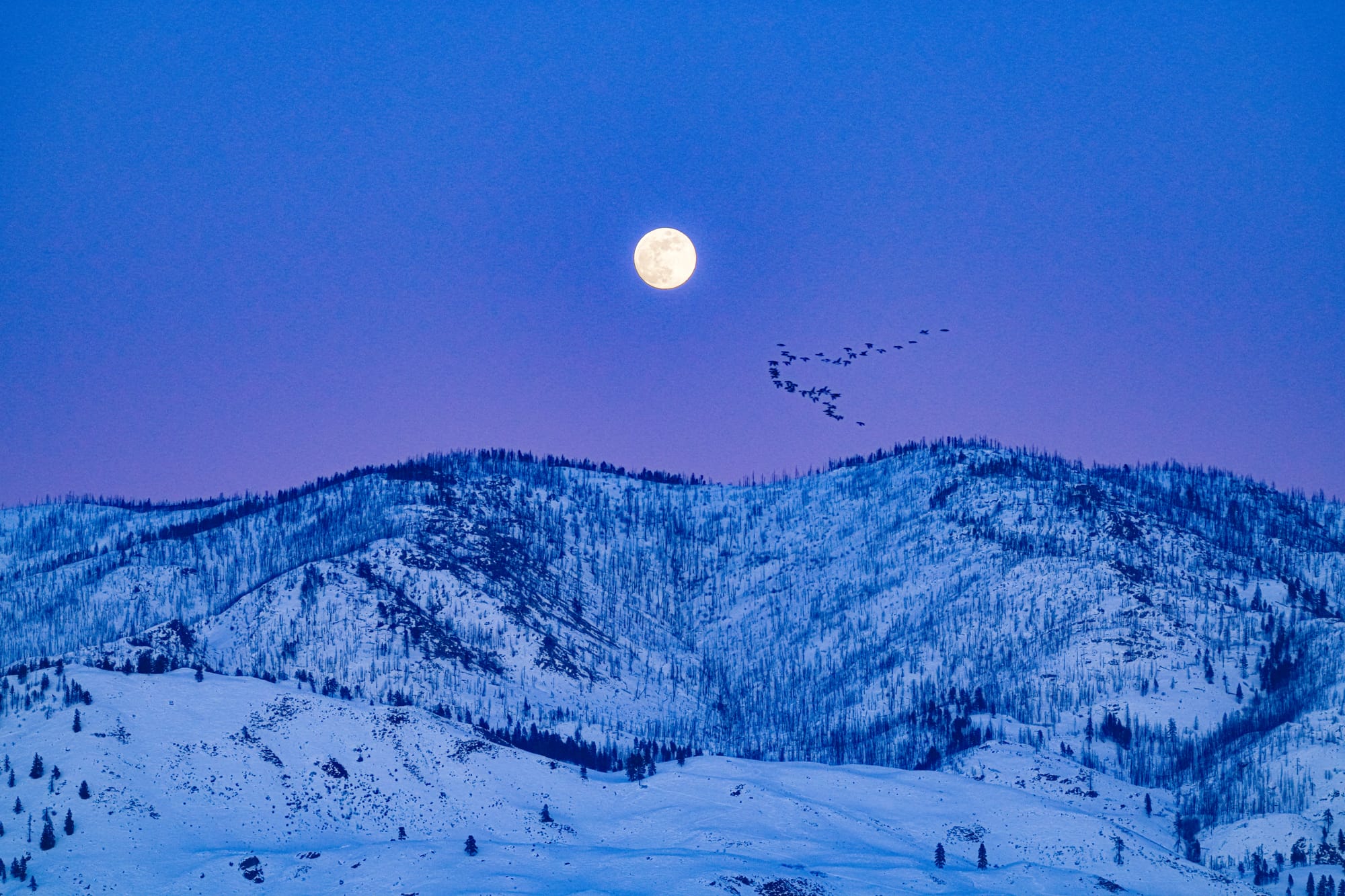
There are many cold days still in the forecast, but none as bitterly cold as the last couple weeks, so you have to wonder if we've finally crossed the peak of winter.
Week in Review
Brrr, what a week this has been! While temperatures were colder last winter, the cold this winter has lasted much longer and temperatures still dropped down to around -16 degrees. Looking at the forecast for the coming week, temperatures are expected to climb back up into the teens at night, which is either a relief or a small step towards spring.
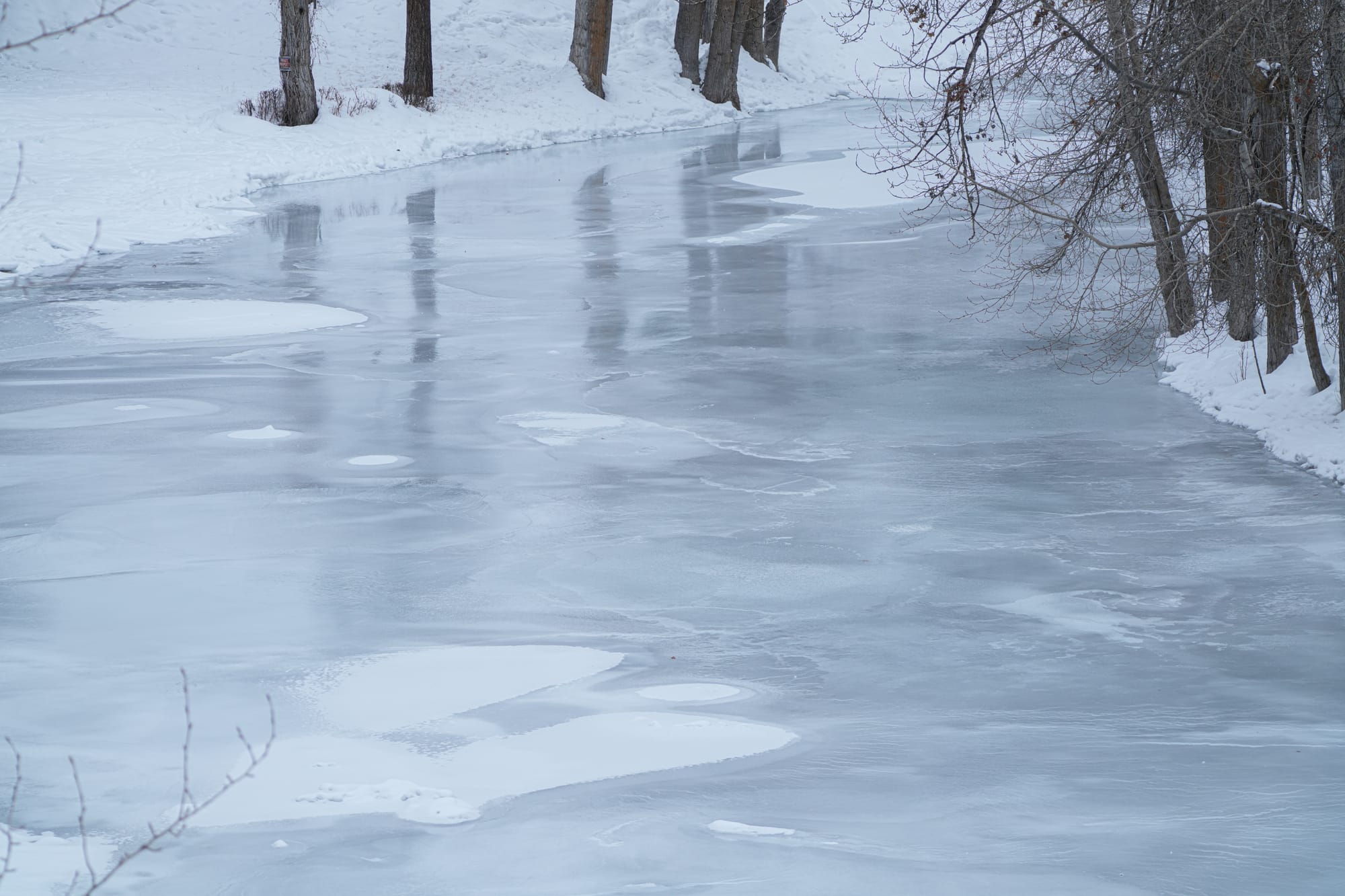
It seems like some of the birds are feeling these changes as well. Every sunny day the house finches are being just a little more vocal as they respond to the coming spring.
Great horned owls are also paired up and defending territories, both by their conspicuous presence and by their loud calls. Here is a snippet of two males arguing over their territorial boundaries this week (males have deeper voices, and in this recording you can hear that both these birds have the same tone, whereas you would hear the different tonal qualities if a male and female are dueting).
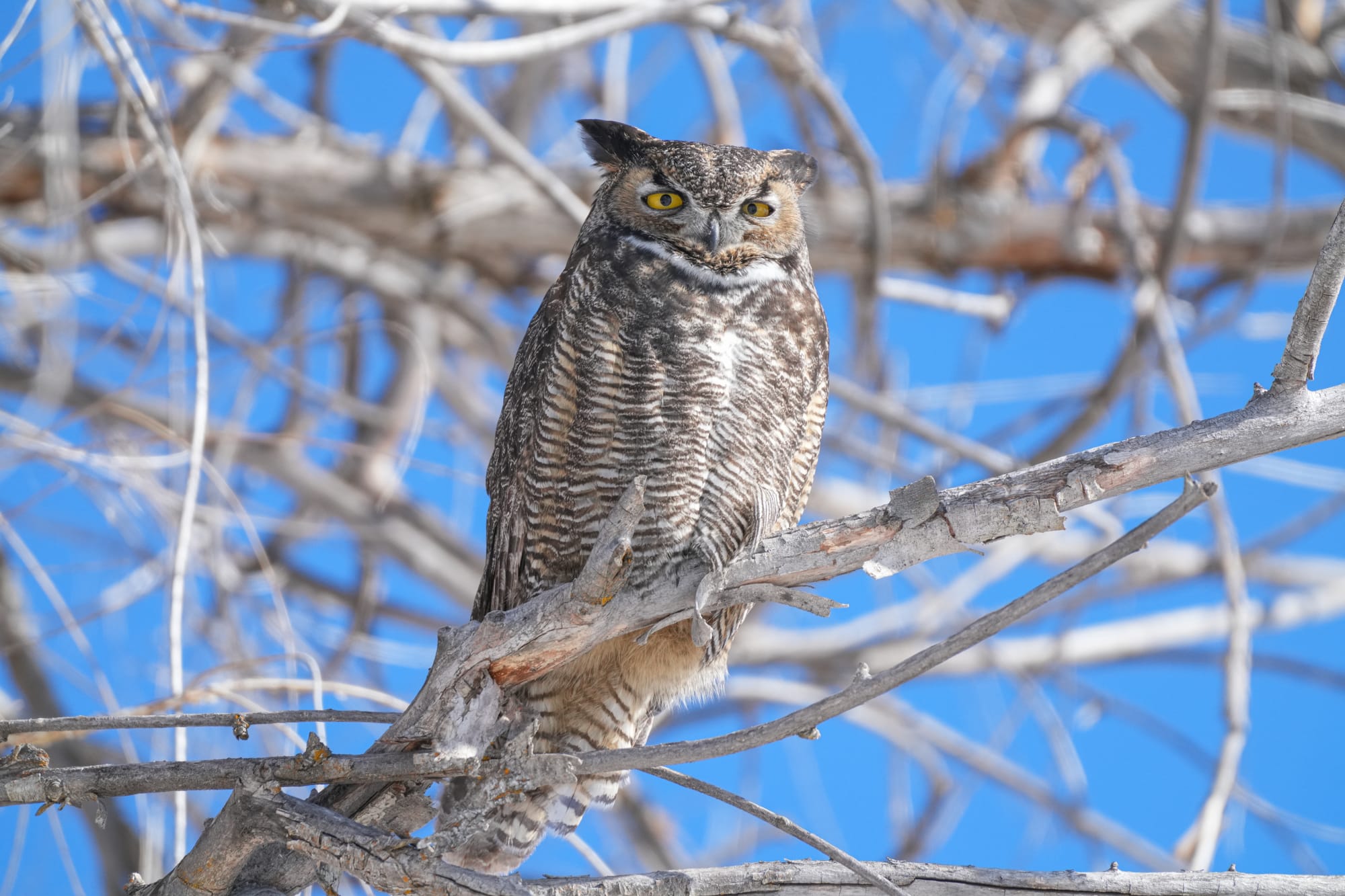
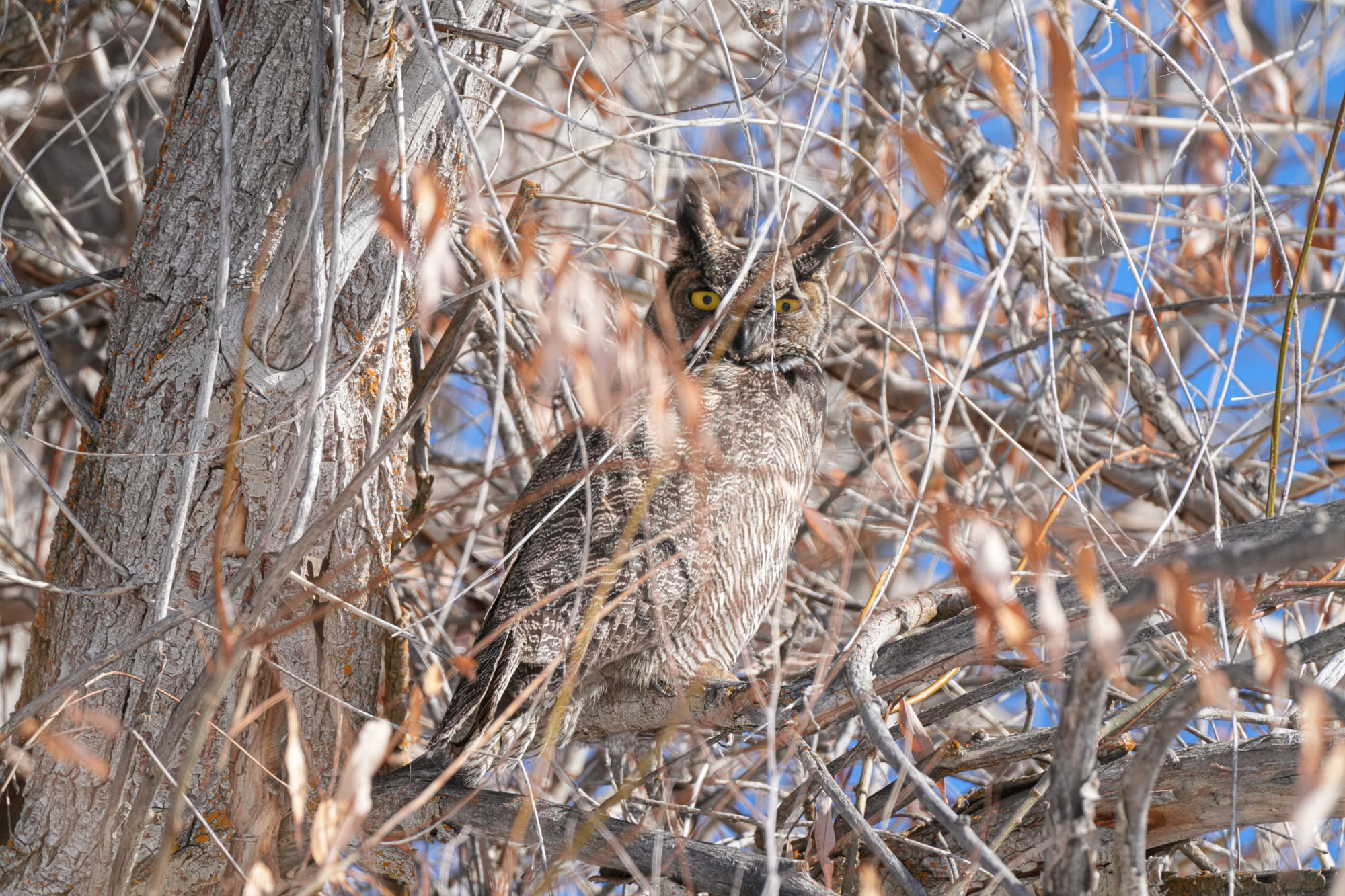
A pair of great horned owls sitting on the same branch together. Photos by David Lukas
A lonely western meadowlark stopped for a moment in our yard this week and I have to worry about a bird like this. Meadowlarks find all their food on bare ground, so even if they could find open patches it doesn't seem like there'd be much food for them to eat. My best guess is that in the winter a meadowlark would have to trapline for food, which means that it would memorize the locations of tiny patches of bare ground then have a daily route where it visits the patches in a sequence, over and over again.
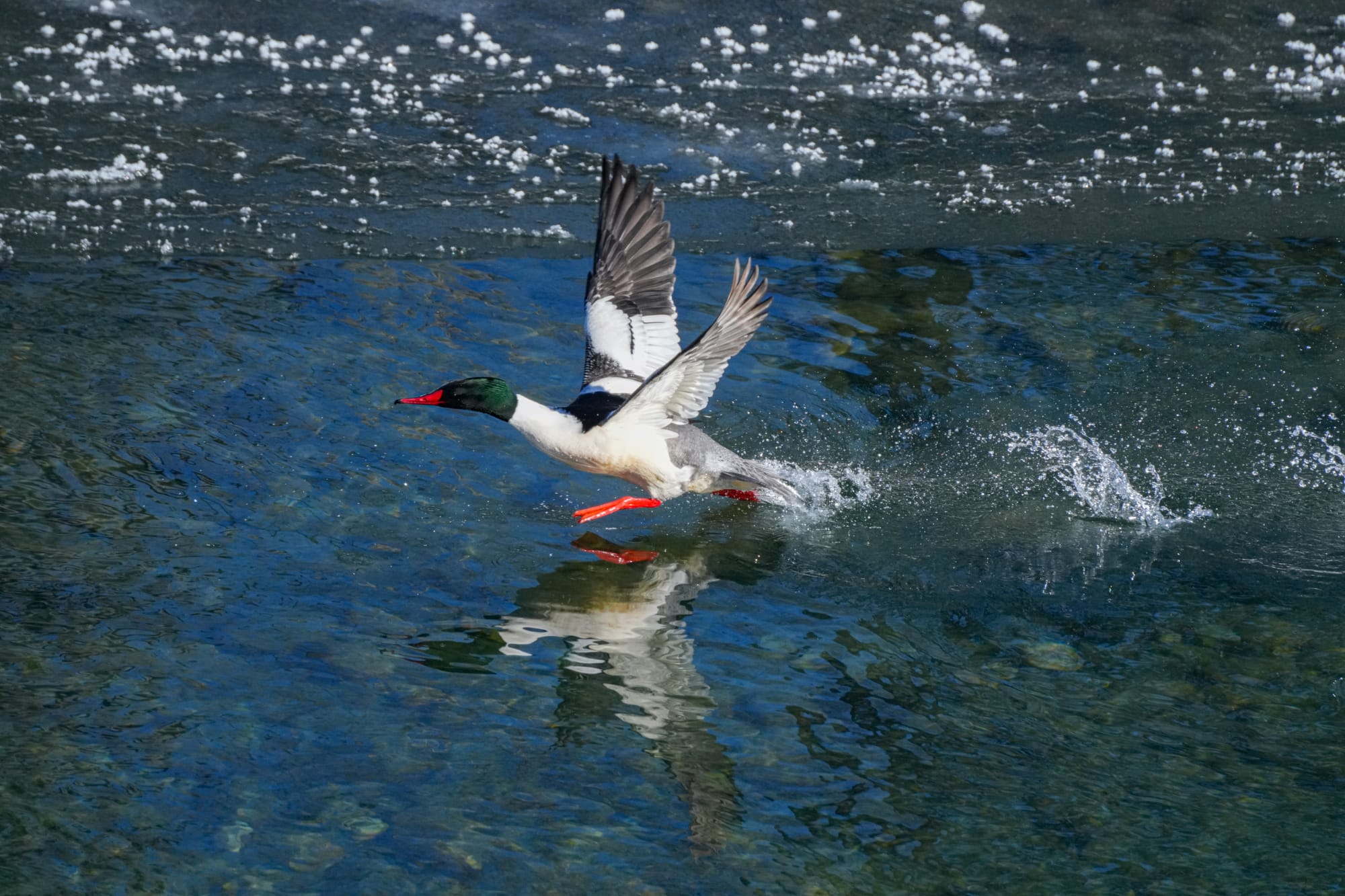
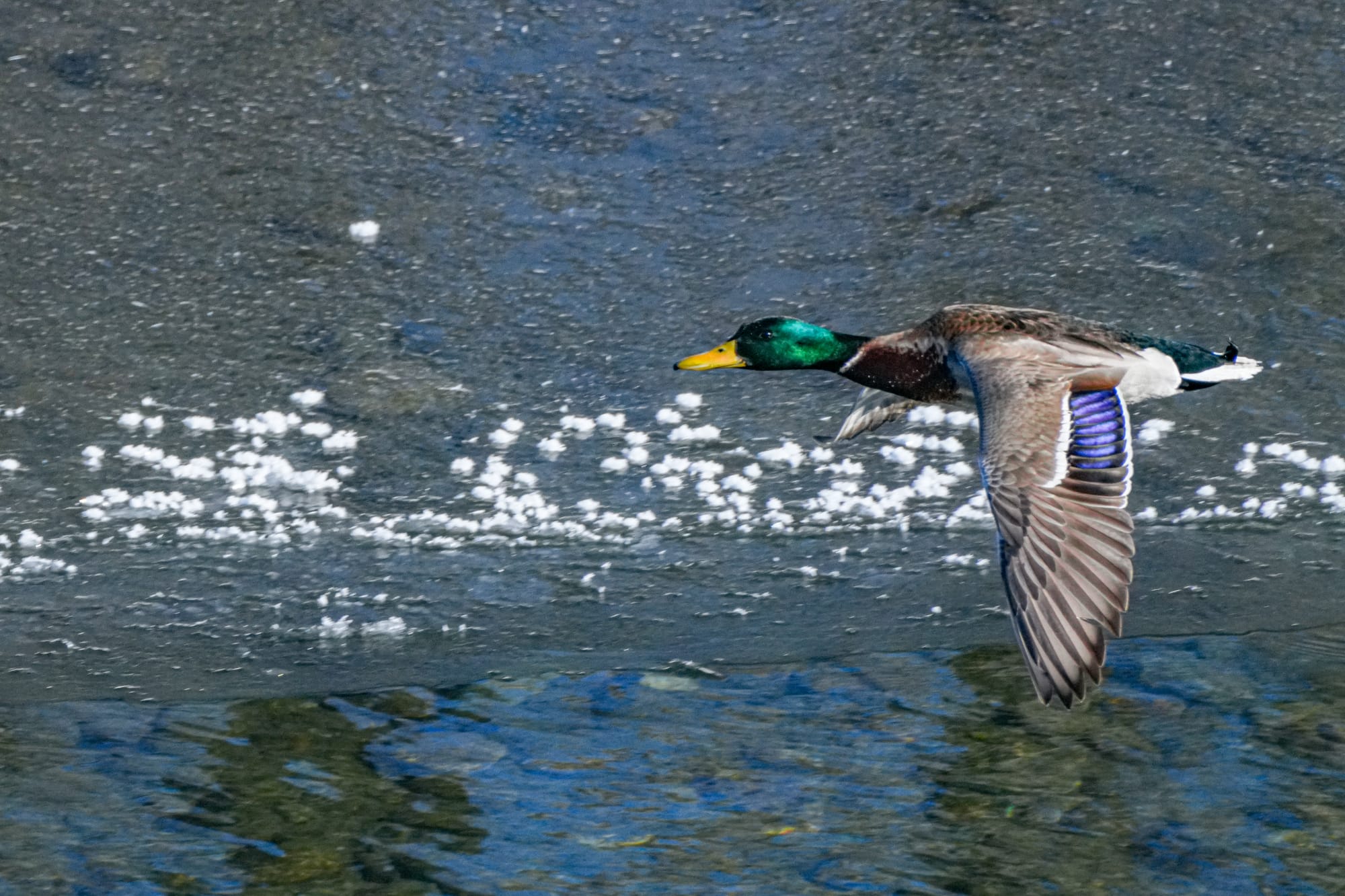
Common merganser (left) and mallard (right) adding a welcome dash of color on a very cold day. Photos by David Lukas
It was also a pleasure to be visited by a large group of cheerful pygmy nuthatches and mountain chickadees who took frequent breaks from foraging in trees to repeatedly check out our empty nestboxes. Maybe these birds are simply curious, or maybe they're scoping out potential nesting sites to claim later?
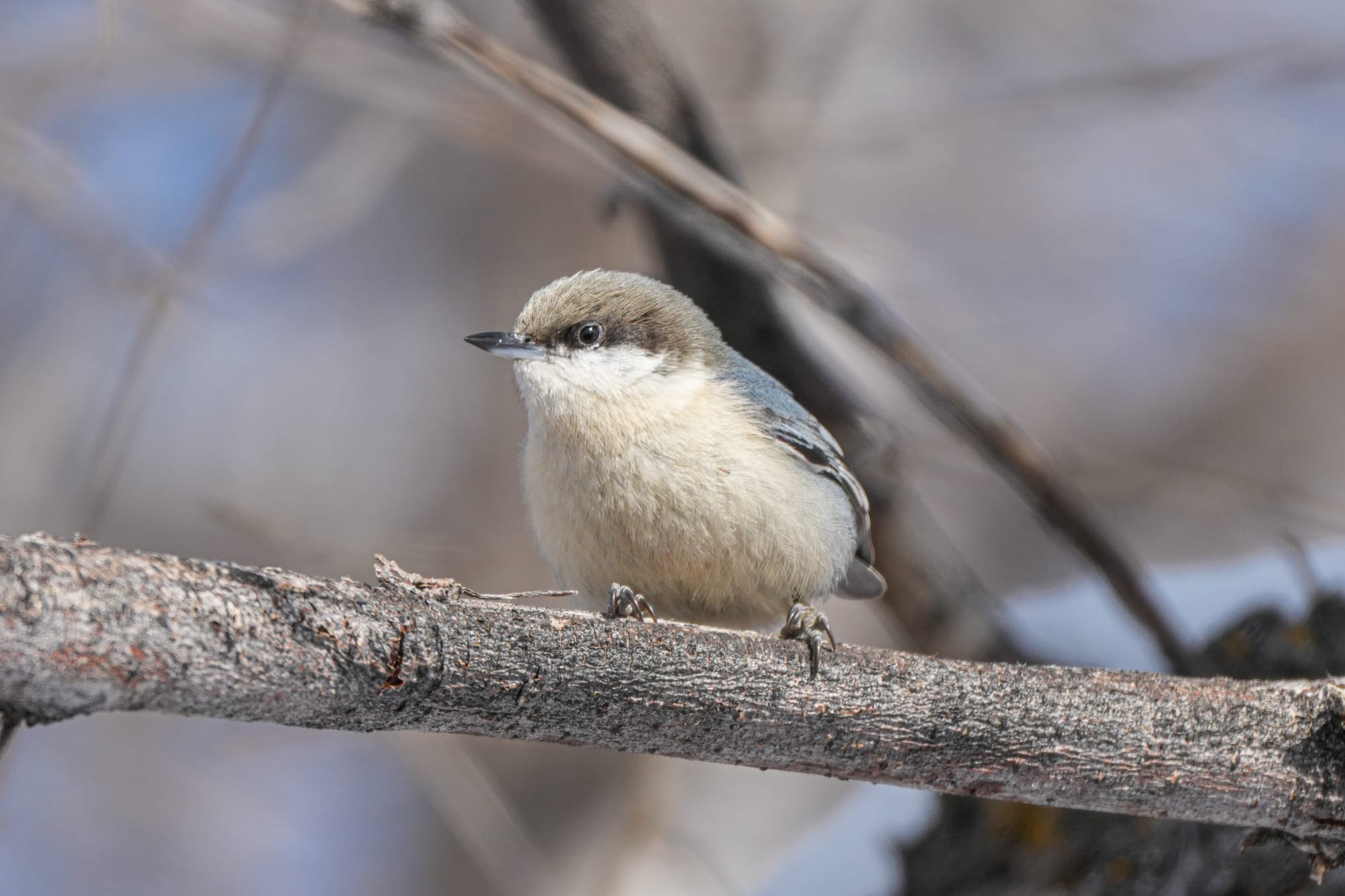
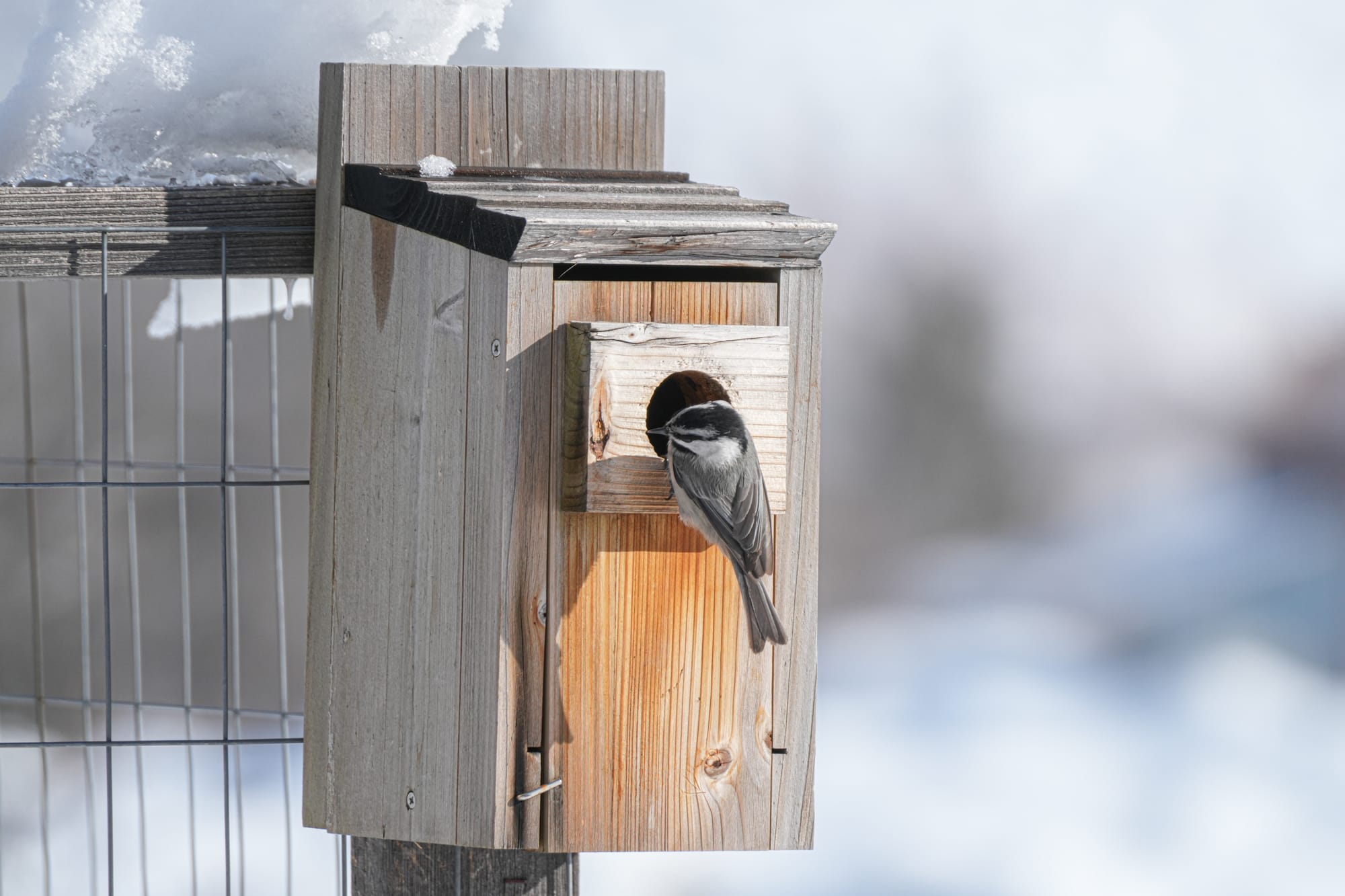
Pygmy nuthatch (left) and mountain chickadee (right). Photos by David Lukas
Another surprise visit came from a large flock of Clark's nutcrackers (nearly 100!) that appeared in a patch of neighborhood ponderosa pines and proceeded to devour pine seeds. There were so many that the sound of them pounding on cones and cracking seeds was almost as loud as their calls. This suggests that their mountain food supplies are diminished so they're roaming at lower elevations in search of supplemental foods.
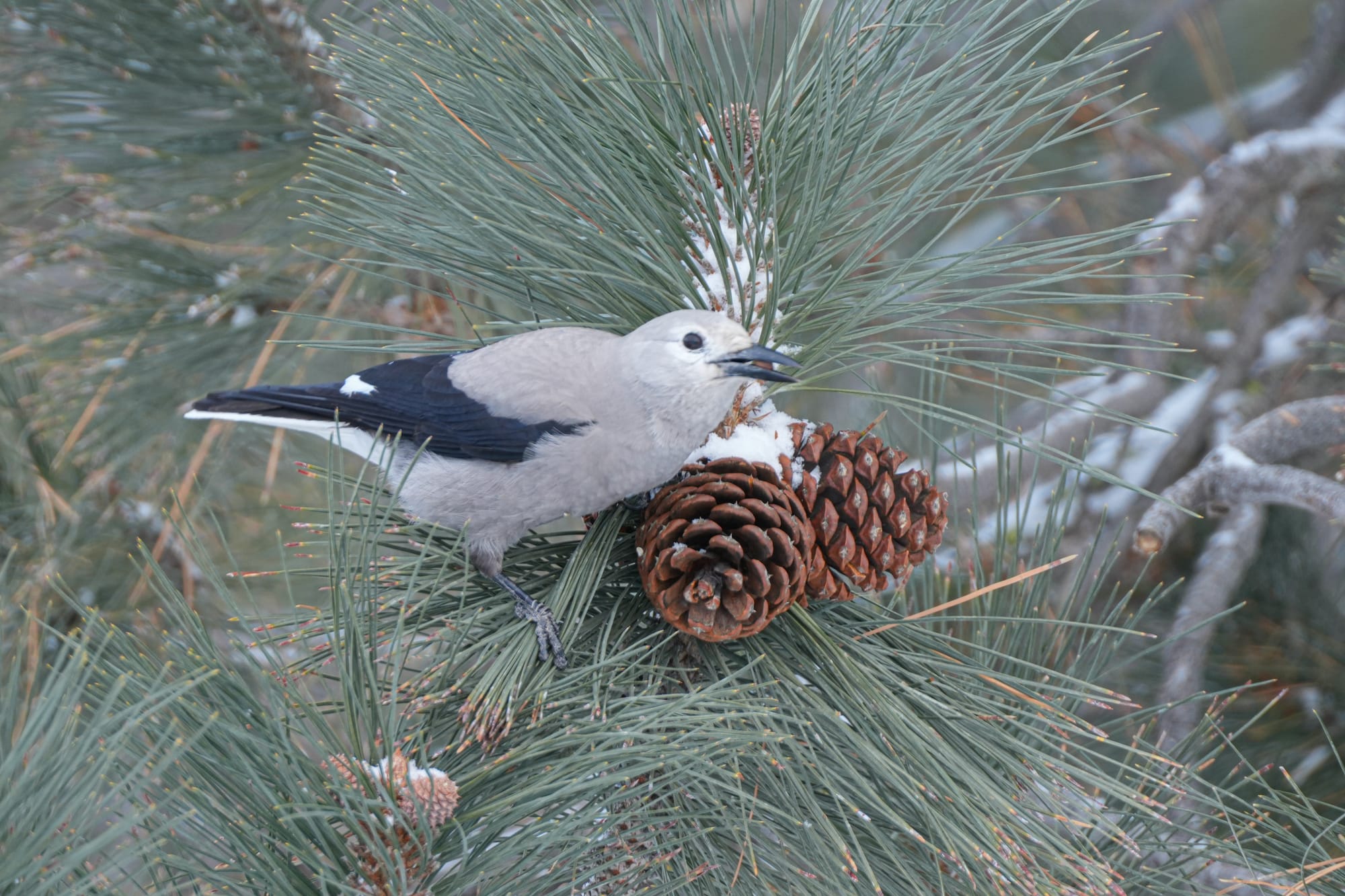
Observation of the Week: Voles
It's easy to overlook voles, but they are one of the Methow Valley's most important and abundant mammals. During the summer voles stay hidden in dense grasses, and during the winter they live under the snow in the subnivean zone, so we very rarely see them.
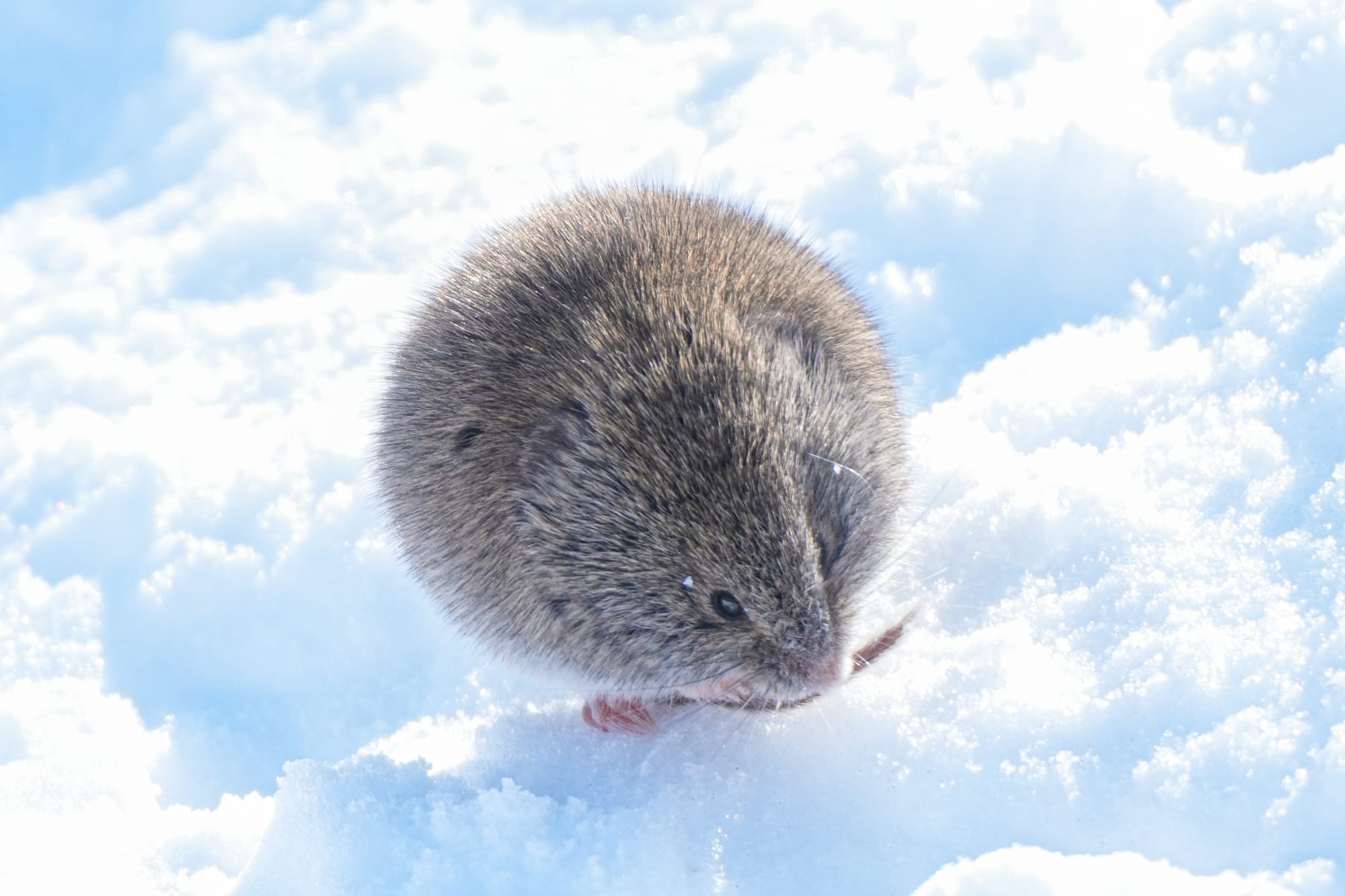
However, I was amazed to discover one scampering on top of the snow this week. At first I thought it was scared and desperately trying to get underneath the snow, but as I watched closely it leisurely puttered around eating seeds scattered on the snow and walking under me as I squatted down to photograph it.

I don't want to be glib about this, but you could say that voles exist to breed and be eaten. Voles begin breeding when they're 3-4 weeks old, and before their babies leave the nest females will mate again, and then continue breeding prolifically until they die at an average age of 2-3 months old.
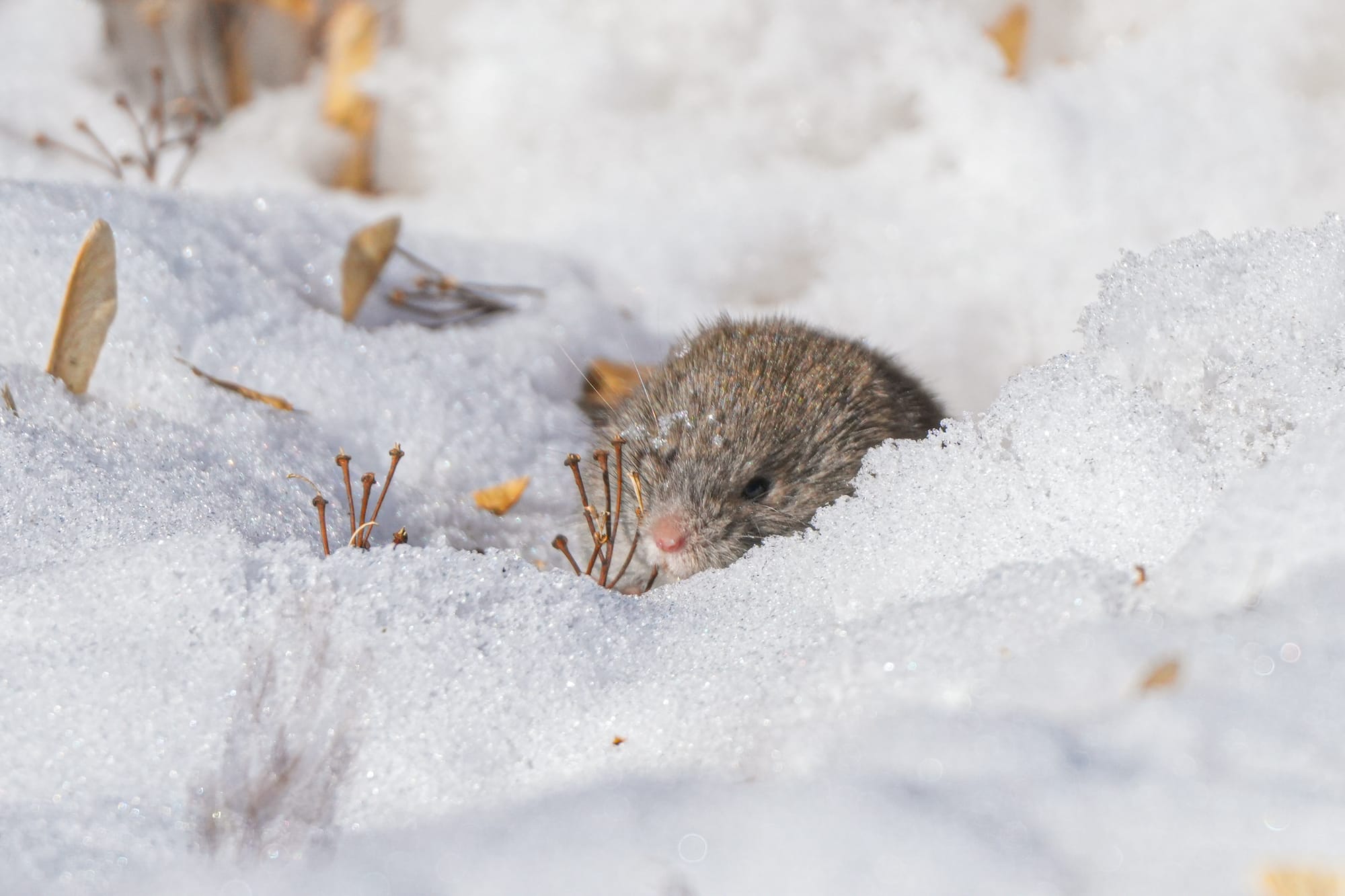
Some years their populations explode in size and they end up eating enormous quantities of vegetation, but in the process they convert plants into the much-needed proteins that a huge variety of predators depend on, so this is the critical ecological role they play.

